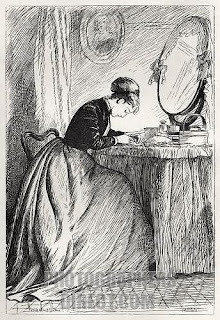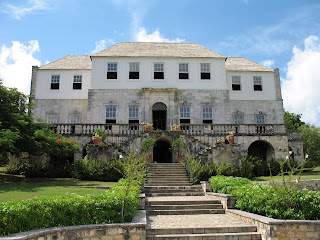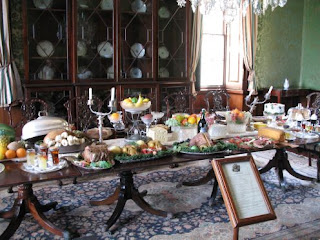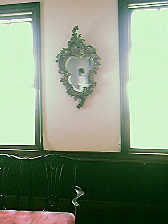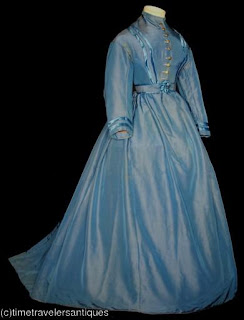>
In order to understand this blog, you must read Part I and Part II first, otherwise things I talk about here won’t make any sense.
I’ve had the picture on the left for several years. My friend sent it to me in an emailed collection of several dozen photographs from the nineteenth century and I remember being so drawn to it the first time I saw it. It reminded me of myself when I was a young mother in that period – all the hopes, the fears, the love and the work put into molding the new little soul into an intelligent, thoughtful and generous individual. This photograph spoke to me in a way that others haven’t in all the years that I have studied and collected things throughout history.
When I came across the photograph today, I found myself thinking not of Fanny as a young mother, but of L’s soul bound to a decaying plantation house where she lived and died trying to bring a baby of her own into the world. She was killed in childbirth by the doctor she trusted to deliver her a healthy child. She was killed because she wasn’t married. The little baby girl was a bastard, yet to L, that baby represented the love that brought about her conception even if it wasn’t by traditional means. I looked at this photograph, which had such a personal representation to me, and I wondered to myself what I would have done if Lawrence wasn’t my husband but merely “the father of a bastard baby.” I expect I would have not been able to move on to the afterlife either if the doctor had killed me during Grace’s birth. Suddenly I had a new understanding of what L endures in that old plantation house even if she no longer has a body. She’s still a mother. So am I. So are all women who have had and will have children. I don’t think that doctor correctly estimated the ferocity with which a mother will love and try to protect her child. It makes me sad that L never got to raise her daughter as I was allowed to raise Grace, Wyllys, Emily and Gertrude.
The reason why these thoughts were in my mind as I went about my day is because I had a rather vivid dream last night. I don’t know if it was “just a dream” or my medium skills going out for a stroll while I slept but the dream has stuck with me all day. In the dream, I found myself at the plantation house again but I was alone that time as opposed to being with my friends. The house was as it looked in L’s lifetime but V was there as well even though she lived there much later. I went up the front steps and went inside as if I lived there but I knew it wasn’t “real” – it was a very vivid medium experience. I went to L’s room without stopping at the other rooms along the way. She was there in a dark blue house dress, as in not a dress she would wear out, and I could tell that she was about six months pregnant. She was standing at her table with the mirror between the windows and she was arranging what she called her tea roses in what looked more like a crystal bowl than a traditional tall flower vase. She loved her roses and I had spoken to her about them when I was actually there last month.
She invited me to sit in an armchair by the fireplace and she was happy to show me the baby clothes she had been sewing. The entire time both she and I knew that she was no longer alive and this was a big projection of imagery from her life that she preferred to think about rather than dwelling on her last day of life and why she never knew her baby. To her, it seems that going through the motions of preparing for the baby makes her feel like she could have had some control over what happened.
This is when it got really interesting.
As she showed me a few things for the baby, her eyes lit up and she told me she knew I could keep her secrets like her “sweet cousin [editing name out]” did. I said of course and she pulled out a letter from a hiding place (I don’t want to say where) and showed me a letter from the baby’s father. He was elsewhere, as in L had been sent to that plantation when her pregnancy was discovered, and the father was kept away from her. She kept telling me that she wasn’t “loose” and she had intended to elope before things unraveled. I told her I understood and she began to cry. She was wringing her hands and saying that nobody knew what happened to her, that she was a big secret and so on and so forth. I told her not to upset herself and that a lot of us knew the truth about what happened to her and we know that she was the innocent party in this story. That seemed to make her feel better. After a moment of silence, she wondered what happened to her baby’s father and if he ever thought about her. I think she truly did love that man.
It’s interesting how perceptions can dictate what legacy people leave and what happens to them. I had five children with the man I loved and nobody batted an eyelash because we went through a ceremony that made our union acceptable. Without that ceremony, people could be just as in love but deemed sinful, evil or mentally ill. Two couples could love each other equally but if one couple wasn’t married, the child produced of that love had less value than the child produced by the married couple. Phrases like loose woman and bastard baby could ruin – or even end – lives in the blink of an eye.
I would say that L gets to me in ways that other spirits I’ve worked with do not. She cannot let go of that plantation house until the doctor who killed her leaves and releases his grip on the other souls stuck there. I think my sense of hopelessness about the situation makes the case stick to me. There is no quick fix. I can only do my best for L, her baby, V and the other souls connected to that plantation.
Read More














